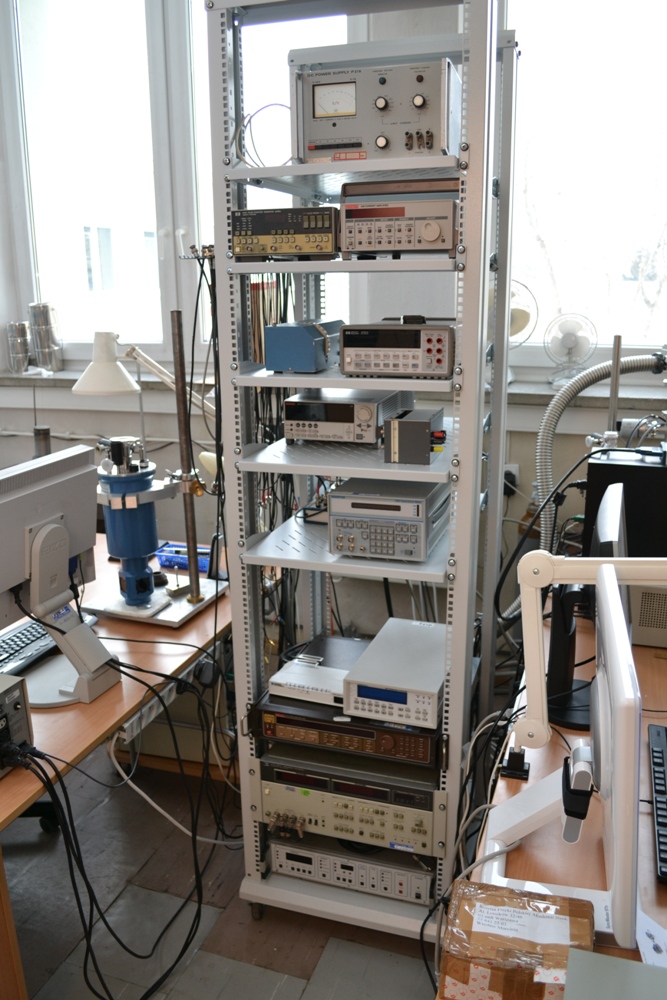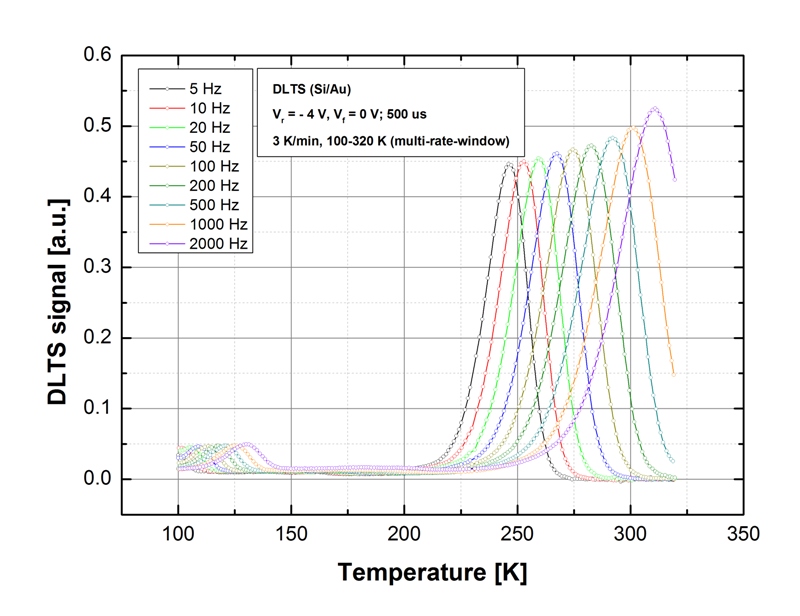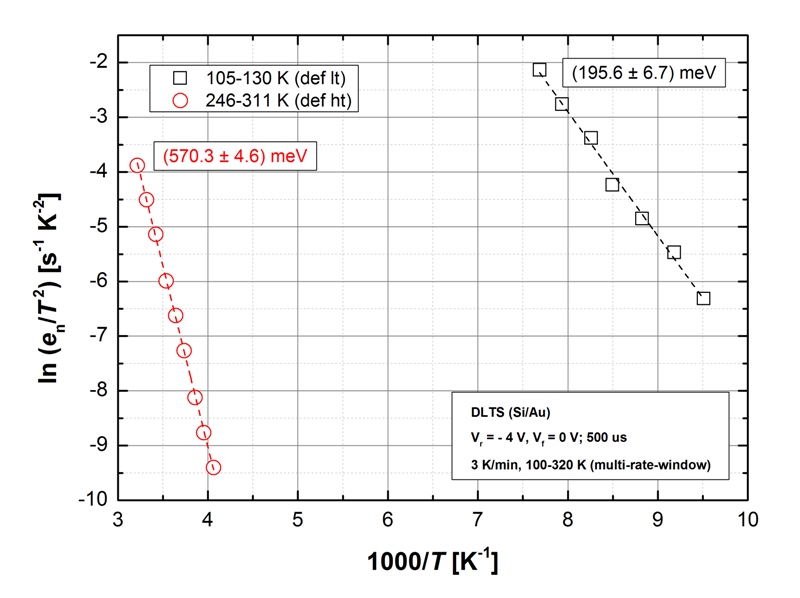

Deep Level Transient Spectroscopy (DLTS) | ||||
DescriptionDeep Level Transient Spectroscopy is a technique based on the measurements of a junction’s (p-n or Schottky type) capacitance relaxation kinetics after applying a voltage pulse. The DLTS measurement is performed within a monotonic temperature change. As a result one obtains a spectrum, consisting of a series of peaks attributed to a given defect level in the structure. A digital DLTS variant – Laplace DLTS, which has one order of magnitude better resolution compared to classical one, allows in turn for a precise separation of the levels introduced by defects having similar origin and activation energy. This is impossible in a classical DLTS approach.
Specification
ApplicationsUsing a DLTS technique or its variants one can analyze defect levels in the examined structure. The basic parameters that can be collected from DLTS are: defect activation energy, trap concentration and a capture cross-section. Due to its simplicity, DLTS method is efficiently applied to a defect structure examination in semiconductors. Understanding their defect nature allows to construct advanced devices with the desired optical and electrical parameters. |
| |||


